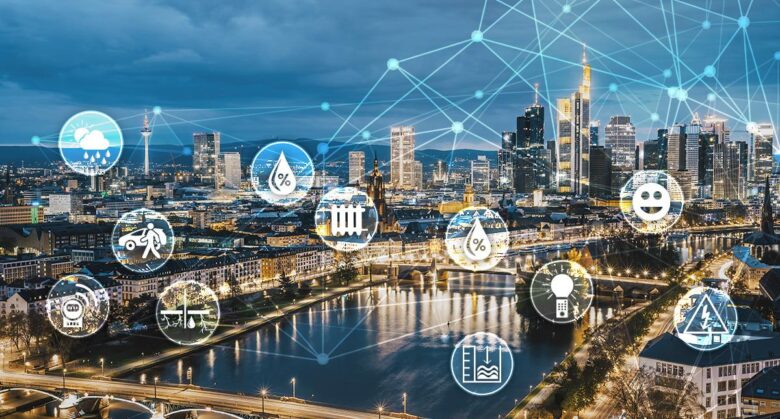The expansion of cities alongside human activities is followed by an equally growing energy need. Urban centers stand at a tipping point as they grapple with the dual challenge of sustaining growth and efficiently managing their energy resources. In this context, protecting our planet for future generations passes any alternatives and requires imaginative strategies that take into account not only the present but also the future.
Picture urban territories running almost entirely on renewable sources while drastically cutting back on waste and pollution. The possibilities are endless for ever more sophisticated and smart technologies, which can help and radically change the way urban energy is managed. It is not only about cost efficiency; it is a higher level of flexibility and durable communities.
We are now witnessing how the best practices can help in the transition of cities into sustainable ones. There are vast opportunities in this regard—from best technologies to local renewable resources—so many buckets available as we move towards the new age of environmentally friendly.
The Importance of Sustainable Energy Management in Urban Areas:
Sustainable energy management is very important for urban areas experiencing explosive population growth, coupled with limited resources. It is the case that as urbanization increases, the pressure on existing energy infrastructure resources increases. Efficient management helps relieve this burden. Urban areas are often known to be sources of high levels of greenhouse gas emissions. However, if proper sustainable practices are employed, these urban areas can significantly mitigate the adverse effects of carbon. This not only enhances the ecology but also improves the health of the people.
In addition, growth in the economy is encouraged through the efficient use of energy resources. It creates employment opportunities as other renewable hubs are developed and also reduces dependence on foreign fossil fuels. Exposed to this opportunity, communities become self-sufficient, creating more resilience. This transformation, however, relies heavily on public appreciation and involvement. When citizens appreciate the idea of sustainable practices, they are more likely to become active participants in energy efficiency initiatives. Moving urban citizens to the center of these regions, prioritizing sustainable solutions, enhances the quality of urban living, turning these areas into innovative, responsible regions envied by others.
Challenges Faced by Cities in Managing Energy Resources:
- Cities have to grapple with several issues in sustainably managing their energy resources. Infrastructure growth cannot keep pace with the explosive population growth, resulting in energy demand that cities are often unable to satisfy.
- Just as much as any other factor, it is aging that is responsible for losses in efficiency. These systems also tend to fail often and require a lot of maintenance, which also takes a lot of money away from deploying new technologies.
- Moreover, it is the built environment that can limit the use of DEC devices. Activities such as putting solar panels or wind turbines are difficult for various reasons, ranging from little rooftop space to detailed zoning rules.
- The economics of the scenario further adds to the challenges. These settings are likely to be overburdened since low-income areas might not have the latest technologies or green policies as attractions.
- Then the issue of climate change comes in and it is no secret that climate change increases severe weather and alters weather patterns. This uncertainty puts an extra layer of pressure on already abused energy systems in city regions.
New Methods for Urban Energy Management:
Urban energy management is witnessing change for the better and quicker, and innovation is reshaping the situation. Current generation cities are not only consuming but optimizing their energy usage thanks to new solutions. One such solution is demand response systems. These platforms allow electrical utilities to shift loads from peak to off peak usage. Consumers are paid to decrease their consumption when the grid is under deep stress.
Another important aspect is energy storage solutions. Batteries can store surplus renewable energy that is generated from sources that are only intermittently available, like sun or wind, and return the stored energy whenever needed. This equilibrium contributes to better efficiency and reliability. In addition, advanced analytics technology is being embedded in the cities’ systems. This is where data analytics can provide city planners with effective strategies for infrastructure needs and how available resources can be utilized to achieve the same.
Community solar projects are also a response to the limitations of the market — focus on the need to make communities sustainable. It helps such residents who do not have roofs, which allows them access to shared solar panels, hence promoting both involvement and clean energy production for the neighborhoods.
Smart Grid Technology and Its Advantages:
The use of smart grid technology is changing the way cities operate, considering their energy resources. It forms an integration network that allows both the electricity suppliers and their customers to communicate through the Internet in real time. This Internet of Things connectivity allows for effective energy consumption. Among the greatest advantages is the enhanced reliability of these systems. Smart grids automatically detect power outages; hence, downtime is cut down tremendously. These systems also assist in demand and supply equilibrium by ensuring the best energy distribution depending on consumption habits.
In addition, modern grids help to incorporate sustainable energy sources, such as solar and wind energy. Not only does this reduce carbon emissions, but it also encourages residents to adopt green habits. Empowering users, applications allow clients to gain information about their energy usage patterns. This information enables them to take necessary steps to cut down on usage and costs. In effect, the infrastructure is more flexible and can be modified as per the required changes without losing sight of the green initiatives within the metropolitan regions.
Renewable Energy Sources in Urban Settings:
Up to now, the picture presented grew on the ideas of sustainable development of cities. However, the ideas did not incorporate the use of up-to-date technology in addressing urban growth. More and more urban populations are starting to use renewable energy sources to facilitate their development. Solar panels placed on rooftops create electrical energy from sunlight-driven energy in places where it is most needed.
Wind energy, which is often seen in rural areas, is also moving into the urban landscape through wind turbines. Vertical wind turbines are a space-saving alternative that is suitable for building structures or urban developments. Another innovative solution is the use of biogas from waste matter. Cities have a two-way benefit of transforming food waste or other organic waste into power and at the same time dealing with waste management problems.
There are opportunities in hydropower as well. Even small-scale systems capturing river currents or stormwater runoff feed into the local energy grid with low ecological effects. The incorporation of these renewable sources helps promote resilience and shrink carbon footprints. The city populations are not only offered clean air but also reduced fossil fuel use for their day-to-day activities.
Recent Developments and the Possible Effects on Communities:
When considering the future of urban heat energy, it is enabled through technological development seemingly without end. Urban centers are beginning to adopt smart measures that will entirely change the way energy will be consumed. As smart grids mature, they will facilitate real-time usage tracking. It allows consumers and suppliers of energy to effectively improve usage. Expect plenty of community-driven projects seeking sustainability in the future.
In other instances, wind energy and solar energy will be very important. Most metropolitan areas are increasingly installing solar panels and wind farms to reduce fossil fuel usage significantly. Social impacts are equally significant. There is a push for sustainable solutions and practices among the residents, which raises their environmental consciousness. As communities begin to integrate more optimal resources and energy sources, they can shield themselves from the adverse effects of climate change.
Thanks to these efforts, civilization is on the threshold of a new development—a new world where the image of the city is integrated with the image of nature. There are considerable prospects, such as being framed in cleaner atmospheres, lower expenditures, and better living standards.
Conclusion:
A commitment to incorporating new urban energy management technologies is paramount if the world is to be conceived sustainably. With the increasing rise of cities, the growing need for energy uptake emerges. New technologies and renewable energies are fundamental in altering the habits of energy consumption. These not only allow more effective control over the use of the resources but also enhance the motivation to engage the community. More resource-efficient cities inspire others to enhance their resource efficiency. Such a resolve can impact legislative reform and bring about the spark for fresh interventions in different sectors.
The transition towards urban sustainability requires a concerted effort from government businesses and the communities of the cities themselves. All of those will help us make a difference and change for the better the ecological situation and the living standards of people in such cities. In this context, however, the need for new ideas and their implementation is very high. And those do not limit themselves to energy savings alone; they expand to health benefits and even new economic growth. Cities can create a path for a better tomorrow through a strong will.
FAQs:
1. What is energy management for sustainable development?
Sustainable energy management is defined as the use and management of energy resources in cities in an efficient manner. It is geared towards maximum energy consumption, minimization of waste, promoting alternate sources, and ensuring economic growth with ecological concerns.
2. In what way can smart grids improve energy management in cities?
“Smart” grids utilize technologies such as sensors and data analytics to improve the efficiency of electricity delivery. They provide accessibility to information on the amount of electricity used at any given time, which allows better demand response, integrates with renewable sources, and improves the intelligence of the power system, making it more robust.
3. Will it be plausible for cities to go 100% renewable?
The scenario of going 100% renewable poses problems such as supply interruptions or storage issues, but many cities are forging ahead in transitioning to increasing their dependency. A combination of solar panels, wind turbines, and other forms will be essential in striking a balance that will foster sustainable patterns in the cities.
4. Who has a stake in sustainable energy?
The citizens participate in achieving the sustainability goals through their decisions. For example, refraining from using energy-intensive tasks during peak hours or using a public vehicle rather than a private one. As an example, the residents of the locality can be encouraged through community engagement initiatives to take responsibility for resource management.
5. Are there any pecuniary benefits for these innovative solutions to be adopted?
Indeed! Governments are often ready to provide incentives in the form of subsidies or tax deductions to an individual incorporating greener technologies like installing solar panels or energy-efficient boilers, among others. These financial assistance schemes enable both people and firms to adopt reasonable sustainable measures and avail themselves of long-term reductions in their energy expenses.




